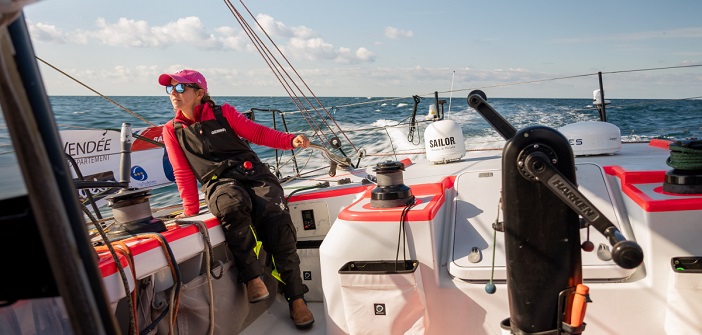Alexia Barrier spent the night at the helm, chaining maneuvers to keep her IMOCA moving despite another calm night off Cape Verde. Fortunately, the wind seems to have returned by the end of the day, allowing her to climb up the rankings with a more easterly option.
Later in the morning, as the navigator wakes up, several strategic questions arise. Is it better to raise the spinnaker or to gybe to try and gain an advantage over Miranda Merron?
To make her decision, the sailor observes her surroundings and notices a large amount of sargassum, which is one of the consequences of climate change: “Thank you, climate change. For now, all I see are banks of sargassum, so if the scientists in Marseille are reading: Focus on this position south of Cape Verde; there’s a lot to study with satellite photos. I don’t know if you’d spot them because the patches are big but not that huge. I don’t know if you’d call them vessels, but they certainly pollute the rudders, and it’s not the right time to put a hydrogenerator in the water,” explained the native of Alpes-Maritimes, visibly tired from this sporty night.
The next goal is to cross the equator by Monday if conditions continue to improve. Ahead, the battle continues a little over 900 nautical miles further south. Now, it’s Thomas Ruyant who leads the race ahead of Alex Thomson and Charlie Dalin. The three men, within less than 60 miles of each other, will have to make strategic choices, like all the competitors, who are expected to increase their lead over the next few hours.


